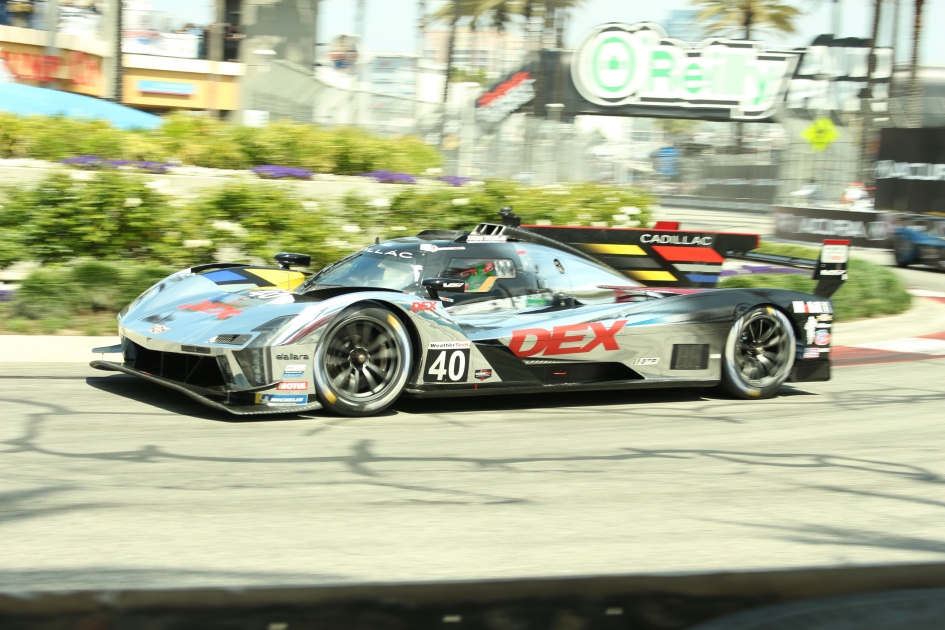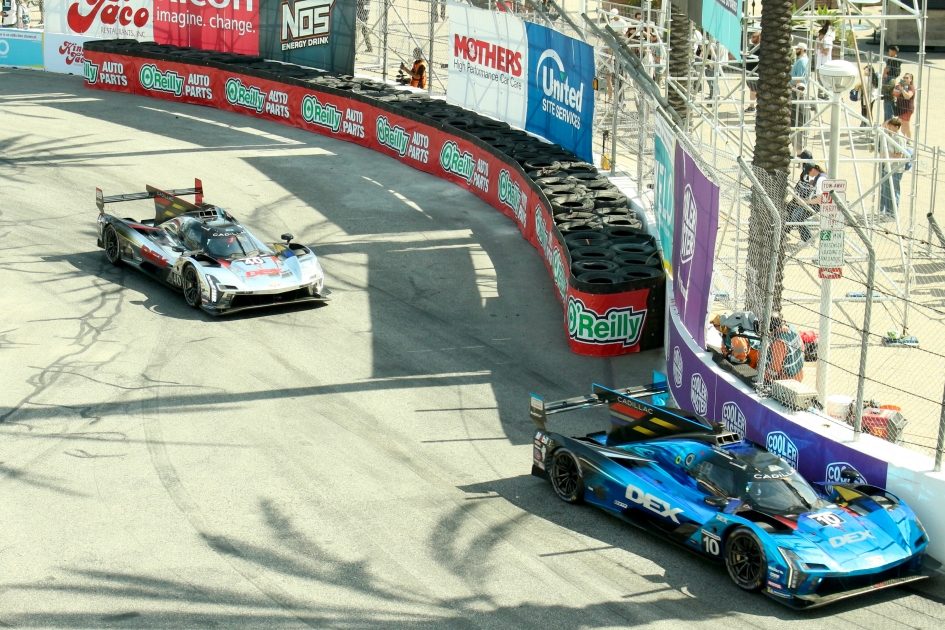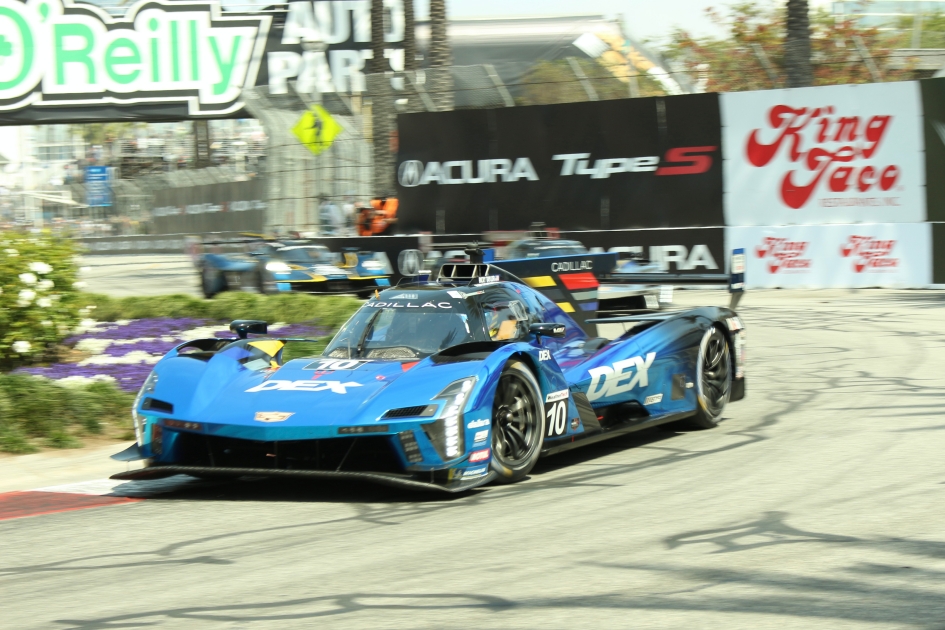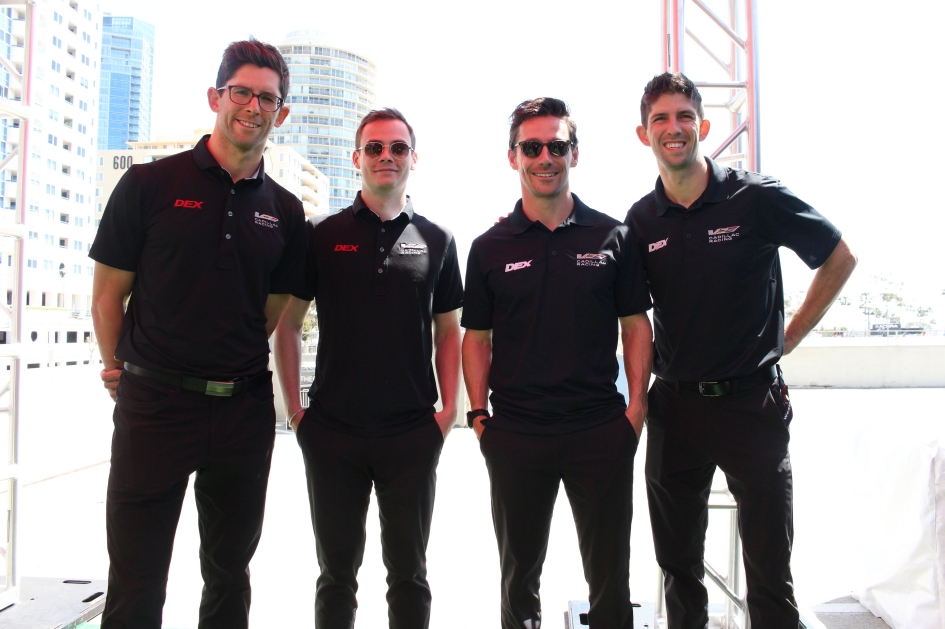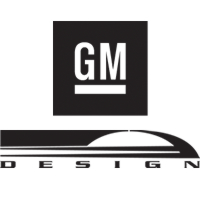When your last name is Taylor, and your dad is a partner in WTRAndretti, racing is expected. Fortunately, both Jordan and his brother, Ricky Taylor, are always competitive. In 2025, the No. 40 DEX Imaging-sponsored Cadillac V-Series.R is keeping Jordan in the IMSA hunt. This isn’t their first time at the Acura Grand Prix of Long Beach, and we expect to see them racing here for years to come. On Thursday before the racing commences, Jordan provides us insight to the grand prix and why bigger isn’t always better.
Interview and images by John Grafman
John Grafman / AutoDesignO: Jordan, this is the 50th anniversary of the Long Beach Grand Prix. What does that mean to you?
An Amazing Place in the History of Motor Sports
Jordan Taylor: Ohhh, it’s great for the sport, obviously. Long Beach has such an amazing place in the history of motor sports, with Formula 1 coming here back in the day. I’ve been racing here, I think since 2014 maybe, in sports cars. So, it’s been a while, and I always love coming back here. The track is amazing. There are not many street courses around the world that you can actually enjoy driving on. It has such a diverse layout and it’s amazing that they’ve been able to keep that traditional layout, driving down Shoreline Blvd. It’s awesome to watch. Back in the day of the Formula 1, cars going up and down the streets, getting all four wheels off the ground. And yeah, all that stuff is the same as it is today. So, it’s cool to feel that history.
AutoDesignO: The world is changing under our feet, and it’s nice to see that we still have some things that have lasted this long. Where do you think Motorsports will be in five years from now?
It’s One of the Most Competitive Fields
Jordan Taylor: Five years from now? Hard to say. I think you know, with where we are in sports car racing, it’s very healthy part and points. We’ve got huge grids both in the prototype category and GT, and it’s still growing. McLaren just announced that they’re coming to Hypercar and GTP, so more manufacturers are coming in. I think on the sports car side, it’s onwards and upwards, and that’s great for our sport. And I think on the IndyCar side, it’s one of the most competitive fields they’ve had in decades. So, it’s great to see for the sport. Obviously, growing up around it, I love all forms of motorsport. And to see everyone you know growing and succeeding is great.
ADO: And one last question. Last year we were able to have the designers from Acura (following the Media Luncheon at Driven Design), as well as those involved with the development of the Acura ARX-06 car. And it turned out there was a relationship between design of production cars and race cars, and the other way around, because this was all done within their studio. What would you like to see in production cars that maybe we aren’t seeing at the moment?
Keep the Racing Competitive and Close
JT: GM, with Cadillac and Corvette, we’ve always said that tech transfer is the biggest reason that we’re in Motorsports. So, what we learn in racing, we try to take to the streets, and what we learn in the streets to try to bring that to racing. And I think the biggest aspect to that is the safety side. The race cars have come along such a long way and in such an extreme environment where you can learn at such a fast rate. And I think that transfers over to the roads very quickly. And obviously in racing, you want performance, and speed, and efficiency. We can take those efficiency things back to the streets, the safety side, and those are the important things. You don’t need to be doing 200 miles an hour on the streets. Some things we can kind of leave out of it. But I think the safety side and efficiency is an amazing part that you can develop in racing in such an extreme environment.
ADO: When I say design, also from an aesthetic side – in terms of styling, what would you like to see?
JT: Oh, that’s tough. I mean, race cars just keep getting bigger and heavier. I would like to go a little bit smaller and lighter, back like we used to. GTP class that we’re in now is much heavier than the prototypes we had, seven or eight years ago in the DPI class. Dropping some weight, keeping the power, keeping the downforce – I think it’s something everyone would like to see. The cars would be a little bit more exciting to watch. They’re great right now, but they are getting a little bit big and heavy, and you see that in all forms of motorsport. And you see that in Formula 1, as well.
The cars are massive, but as long as we can kind of keep the racing competitive and close, as that’s what the fans want to see.


